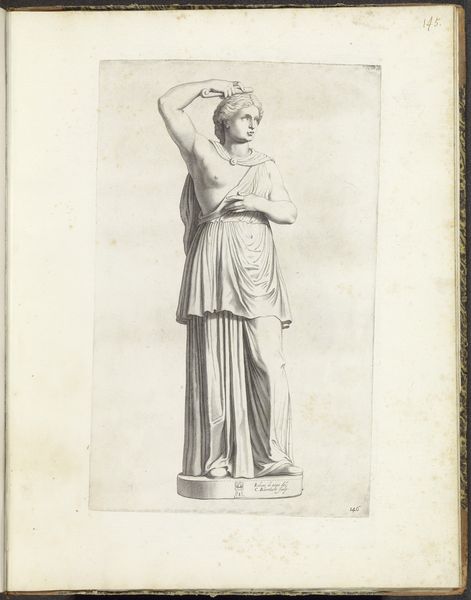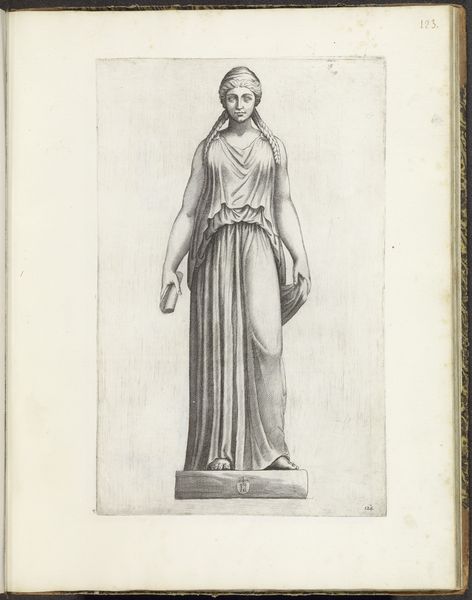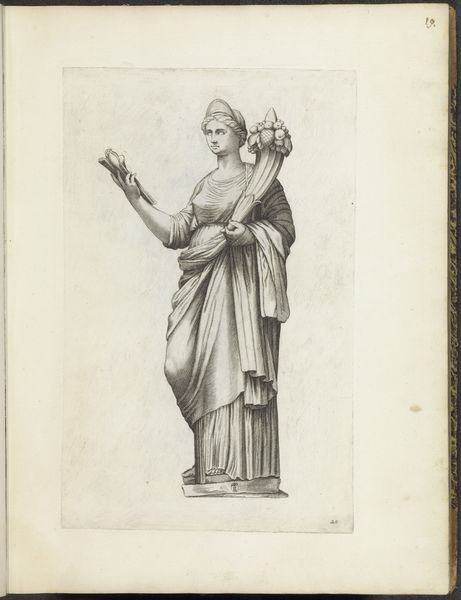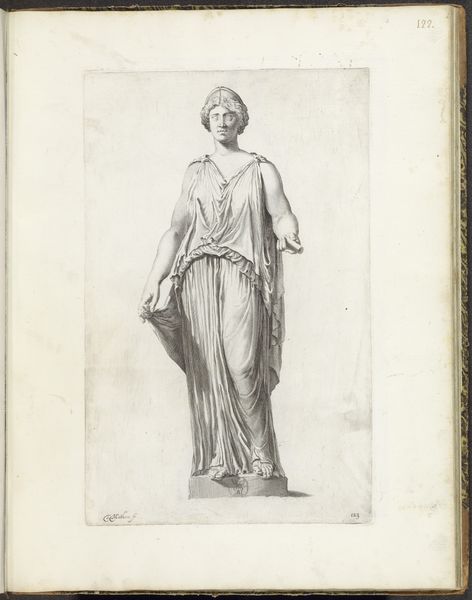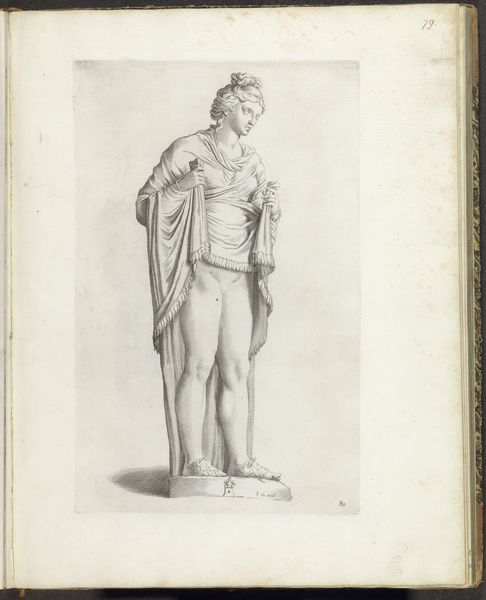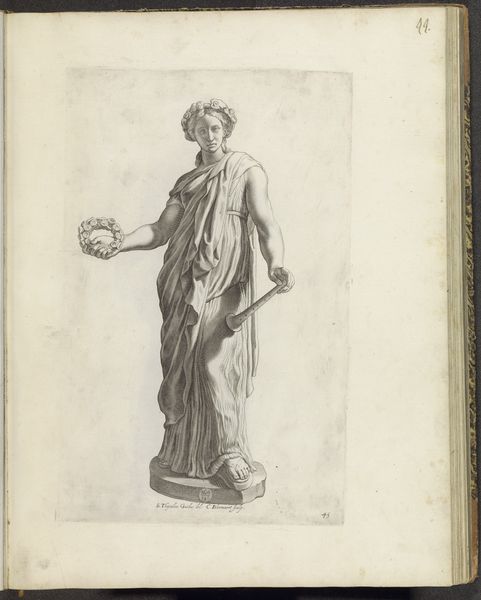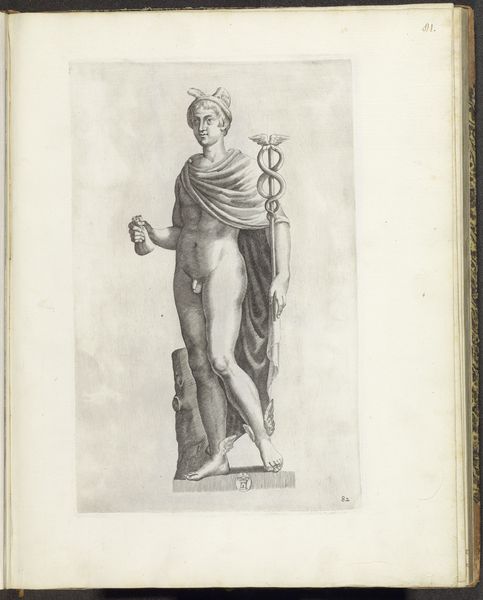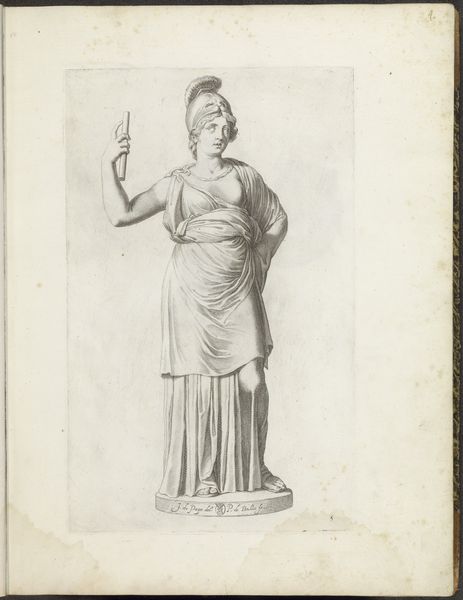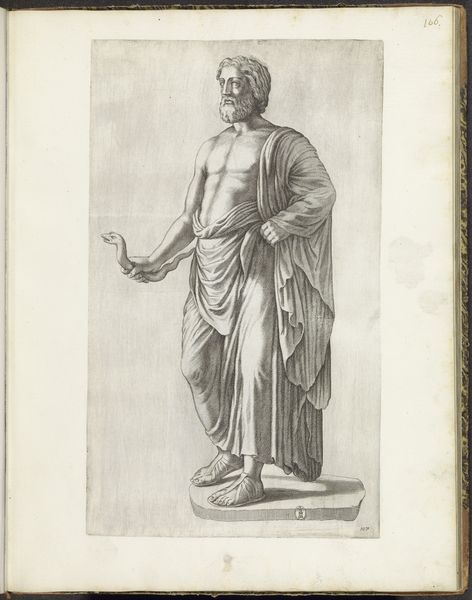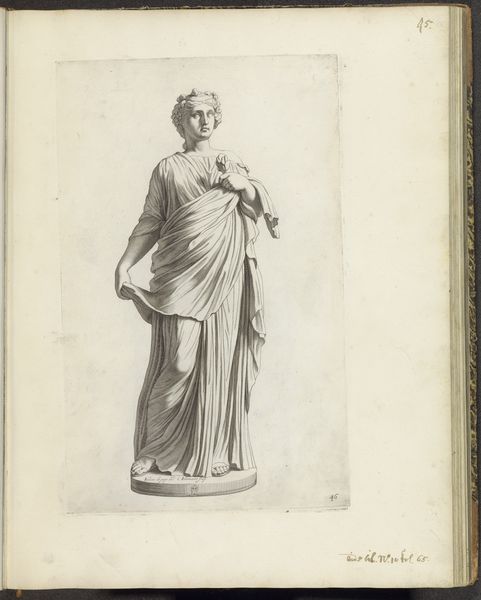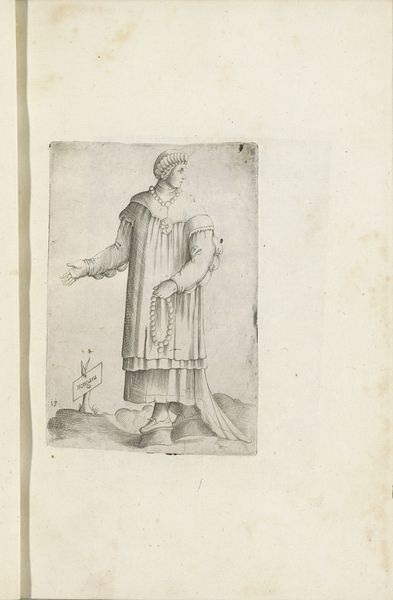
print, engraving
#
portrait
#
baroque
# print
#
classical-realism
#
figuration
#
engraving
Dimensions: height 372 mm, width 230 mm
Copyright: Rijks Museum: Open Domain
Curator: Let's spend a moment with this engraving, “Standbeeld van een vrouw die twee vazen draagt,” or "Statue of a Woman Carrying Two Vases." Cornelis Bloemaert created this print sometime between 1636 and 1647. It resides here at the Rijksmuseum. Editor: The immediate impression is of incredible calm. Even though she’s bearing weight, the figure exudes this incredible sense of stillness and composure. The meticulous rendering makes the marble almost tangible. Curator: Precisely. Bloemaert was working within the visual language of classical realism, heavily influenced by Baroque aesthetics. He captures the idealized female form prevalent during that era but consider, too, how this representation reinforces patriarchal power structures. The woman is stoic, burdened yet beautiful, fulfilling her duty. How does this resonate today? Editor: I see your point entirely! And still… beyond those layers, isn’t there something incredibly dignified here, perhaps in that inherent contradiction? A softness emerges despite the load and the clear, unflinching gaze that holds its own weight—both of burden and of resilience? Perhaps this woman is no allegorical, idealized construct, and simply this very form: beauty arising even, especially, when conditions feel anything but fair. Curator: An interesting counterpoint. Certainly, examining the socio-political context surrounding art doesn’t preclude individual interpretation, and Bloemaert's skillful handling of light and shadow contributes to this powerful effect you mention. It humanizes her, lending depth and complexity to what could otherwise be seen as just another classical depiction. Editor: Absolutely. This image prompts the vital conversations—not just on representation but also on endurance, beauty, and the complexities of bearing witness. Each generation needs a frame and space to redefine and re-envision. Curator: Exactly, art should prompt critical engagement. It can expose hidden narratives, and sometimes that narrative lies in its ability to speak across eras. Editor: In fact, maybe next time I haul something impossibly heavy, I will try to keep an unfailing dignity at my base, with a steady eye as Bloemaert's goddess—it may serve me more good than not.
Comments
No comments
Be the first to comment and join the conversation on the ultimate creative platform.
